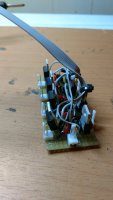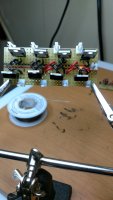Skybound
Well-Known Member
I ran into the same issue and never really solved it. The issue was the device would activate when the value exceeded the set point, but didn't de-activate when it dipped back to below the other set point. My next idea that I never acted upon was to add a boolean test that only activates the device when the test is true, but I went off on another tangent and never revisited the topic. I'm surprised I remembered this much.




 So I went ahead and grabbed Blynk for my phone, and built a little app that afternoon. I ended up installing the local server so the internet connection isn't an issue, and went crazy. I posted screenshots here in this thread as I was playing... I still keep modifying the app to meet my current needs, which mainly are debugging and testing, but I also use it so the system can send me a notification when a plant needs watering. It tells me which plant, and exactly where it is... I also get that info on the web page, but only if I'm looking. On my todo list is the ability to send a notification to my windows pc, just a console app that can notify me... I'm sitting here up to 20 hours a day sometimes...
So I went ahead and grabbed Blynk for my phone, and built a little app that afternoon. I ended up installing the local server so the internet connection isn't an issue, and went crazy. I posted screenshots here in this thread as I was playing... I still keep modifying the app to meet my current needs, which mainly are debugging and testing, but I also use it so the system can send me a notification when a plant needs watering. It tells me which plant, and exactly where it is... I also get that info on the web page, but only if I'm looking. On my todo list is the ability to send a notification to my windows pc, just a console app that can notify me... I'm sitting here up to 20 hours a day sometimes...

